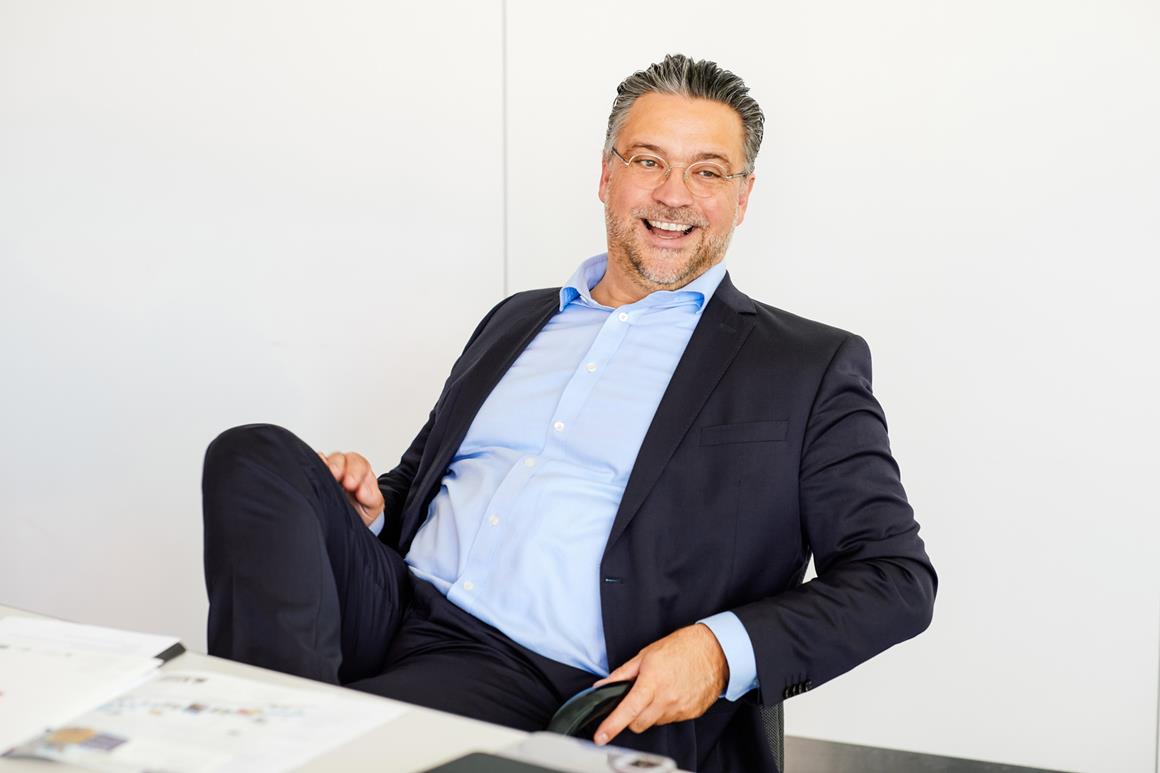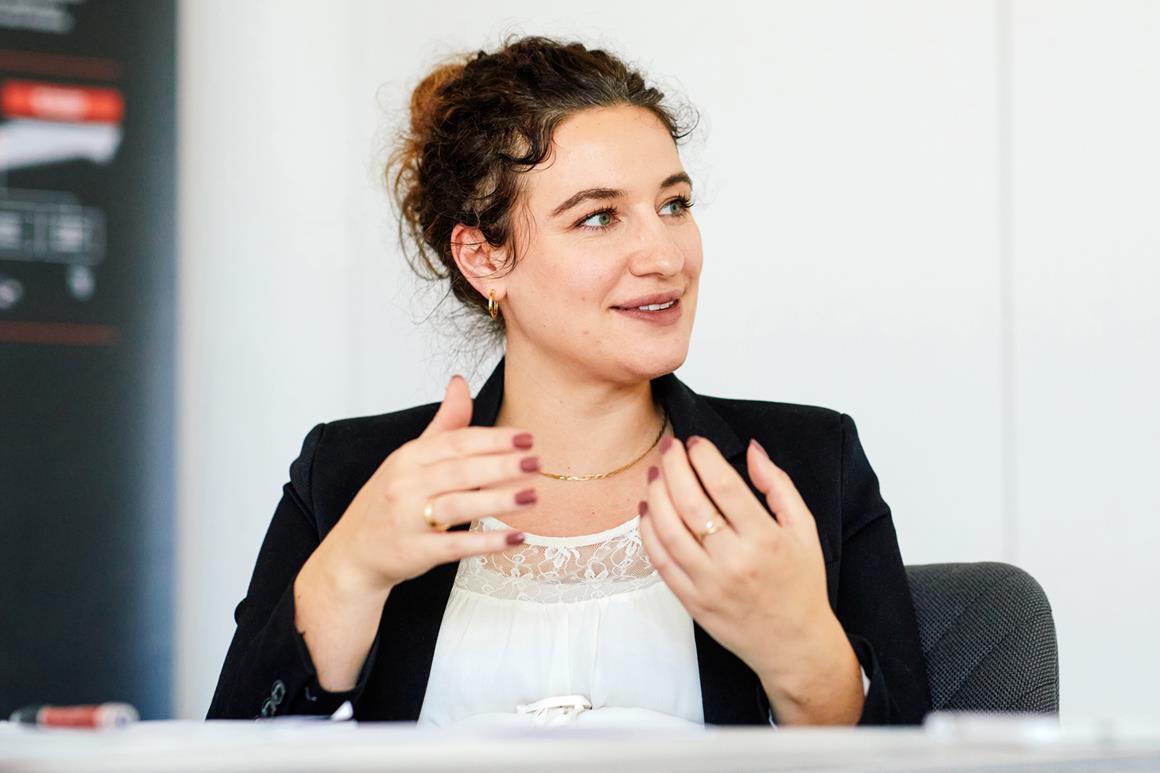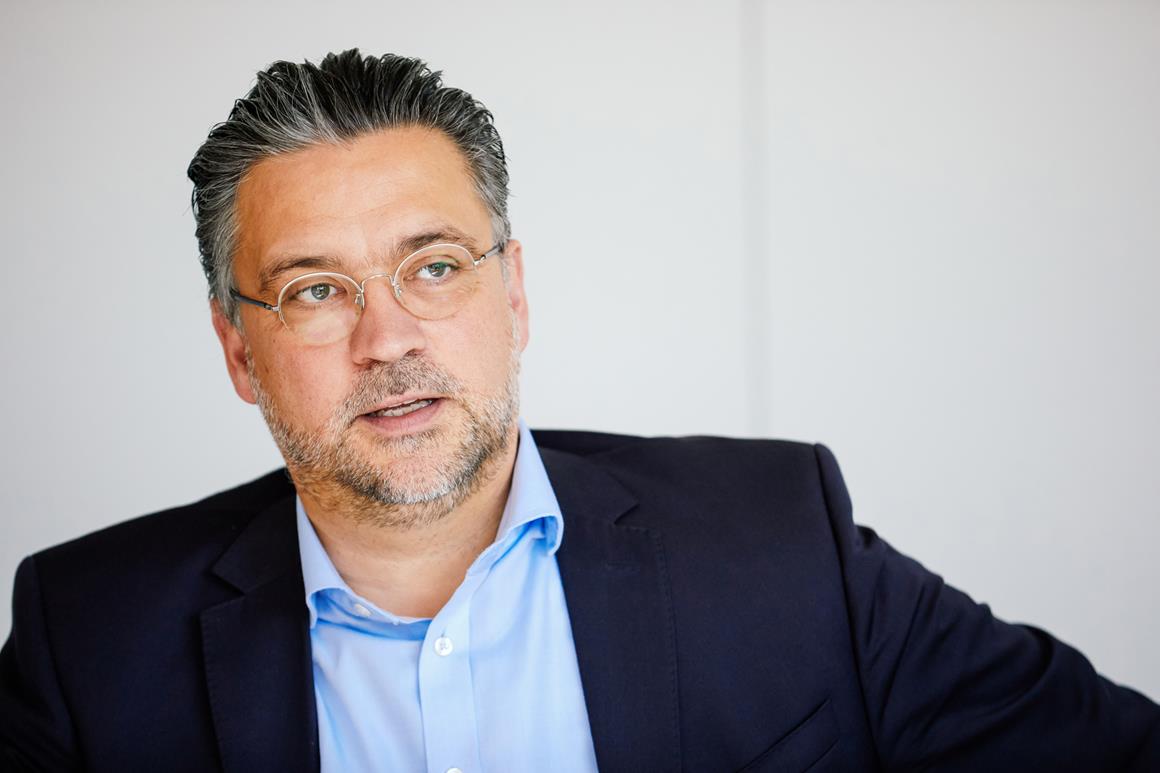Only a few years ago, semiconductors were a purely niche topic – but at the latest since the still ongoing chip shortage, they are probably known to everyone. The Japanese company ROHM Semiconductor has specialized in the production of the sought-after components and expects an even higher demand in the future. Wolfram Harnack, President of ROHM Semiconductor Europe, first joined ROHM in 2008 as Sales Director – and returned to the company in 2020 five years after he had left ROHM. The perfect contact, then, to introduce us to the complex and fascinating world of semiconductors.

J-BIG: Mr Harnack, what can you tell us about the origins of the company?
Wolfram Harnack: ROHM was founded in Kyoto in 1958 by Kenichiro “Ken” Sato, then under the name Toyo Electronics Industry. The founding story sounds like it came straight out of a Hollywood movie. As a student, Ken earned money by repairing radios (as a part-time job) – a product that combined his love of technology and music. In the process, he noticed that one component in particular kept causing problems: the resistor. The young tinkerer promptly decided to develop his own resistor that would be better than the current models. He acquired the necessary knowledge by poring over books in the public library; the first prototypes were created in his parents’ bathroom. Due to the very limited possibilities in home production, young Ken was forced to develop a different process for manufacturing his resistors. He then secretly built these self-creations into the radios he was repairing. And indeed, none of the radios with Ken’s homemade resistors ended up back on his workbench because of a defective resistor.
The components he developed were not only more resistant than those of the competition, but also smaller and easier to install. Together with two friends from the radio repairing part-time job and financial support from his uncle, the young entrepreneur decided to concentrate fully on the production of the novel resistors after his studies. The initial phase was tough – radio manufacturers did not trust the small resistors from the hands of a 23-year-old, and competition was fierce. But when the market for transistor radios and later consumer electronics began to grow abruptly in the mid-fifties of the 20th century – and the patent application had also been successfully completed – the young entrepreneur could suddenly hardly save himself from orders. The red R.ohm model sold particularly well – “R” as in “resistor” and “ohm” as in the unit in which electrical resistance is measured. Ken Sato probably never dreamed that this would one day develop into a globally successful company.

J-BIG: How and when did ROHM start to build up its business in Europe and Germany respectively?
Wolfram Harnack: ROHM started its internationalization offensive in 1971: In addition to a location in Silicon Valley, then as now the center of the semiconductor industry, ROHM Electronics GmbH opened its European headquarters near Mönchengladbach, Germany. Germany was thus the first location in Europe for ROHM. At that time, the company started with ten to 15 employees – a mixture of Japanese expatriates and German employees. And the product portfolio was also nowhere near as large as it is today; the focus was still on the resistors business.
We have been operating at our current location in Willich, Germany, since 1994, and over the course of time seven more locations followed in Europe: Stuttgart and Nuremberg in Germany, Paris, Barcelona, Oulu in Finland, Milan, and Milton Keynes in the UK.

J-BIG: What does ROHM’s product and customer portfolio look like today?
Wolfram Harnack: We are a supplier for the automotive, industrial and consumer electronics segments, but the focus has developed over the years away from the consumer electronics business and towards industry and especially automotive. Our original business was related to radios, televisions, rice stoves and microwaves. From a global perspective, the consumer electronics sector still plays a role today. In the industrial segment, we serve everything from automation to energy management systems. The latter includes solar systems as well as the electrical supply for charging stations, and in the future perhaps also wind energy systems – a sector that will certainly become even more important in the future. In the automotive sector, there are three places where our products play a central role: Entertainment, the powertrain, and the whole issue of safety and assistance systems. From the audio system to the human-machine interface to the lane departure warning system and the power supply – electronics are used everywhere, and so are products that we manufacture at ROHM.
To do it all, we have a comprehensive product portfolio. This still includes resistors, but now also analog integrated circuits, ICs for short, diodes, MOSFETs, transistors, IGBTs and, more recently, increasingly silicon carbide diodes and silicon carbide transistors, so-called power semiconductors. Within this portfolio we specialize in two main areas: One is analog ICs for powering complex circuits. These are essentially needed to ensure the power supply in systems with larger microprocessors and sensors. Such ICs are used, for example, for driver assistance systems in the automotive sector. The sensor and radar systems installed in them have to be supplied with voltage from the battery, and our analog ICs ensure that the correct voltage reaches the respective component. Of course, complex circuits are also used in industry, for example in the field of robotics – our ICs are also used there.
The other major focus is on power semiconductors, i.e. semiconductors for power electronics. Silicon carbide MOSFETs and diodes are particularly important here. The former are needed, for example, for inverters – the units in electric drives that convert DC voltage into AC voltage and thus regulate power management. Typical applications are solar panels and, above all, electric vehicles: Here, silicon carbide MOSFETs enable a better, more compact design and at the same time reduce power dissipation. This is extremely important, and the automotive industry has now recognized that it will not be able to meet future requirements, such as the efficiency of electric cars, without silicon carbides. But the classic IGBTs also belong to the field of power semiconductors – these are bipolar transistors with an insulating gate electrode. In principle, this is a special type of electronic switch that is used in power modules, but also in heating and cooling systems for electric vehicles.
J-BIG: In which area do you see the greatest potential for ROHM?
Wolfram Harnack: The automotive sector offers us many opportunities, but the requirements here are also particularly high. Of course, there have been electronics in cars before, from window regulators to navigation systems, but they were much less complex. Nevertheless, the number of electric vehicles is increasing almost every month, and manufacturers are accelerating platform development in this area enormously. We are very well positioned here, especially with our silicon carbide products. There are currently not many suppliers who can offer this component – we are one of the global market leaders in this area. We took an important step in this area in 2009 when we acquired the Nuremberg-based company SiCrystal, which specializes in the production of single-crystal silicon carbide semiconductor wafers. It has always been a goal of ROHM to be an integrated supplier and to be able to supply as much as possible in-house. The potential that this material would have in the future was seen here as early as 2009, and we are benefiting enormously from this foresight today. Producing the base material, the so-called wafer, for silicon carbide components is very complex and takes a long time – anyone just starting out now will need a while to catch up. This gives us a certain unique selling point and we are convinced that this area will be a key growth driver for us in the future.



J-BIG: The Corona crisis is considered a driver of semiconductor shortages worldwide. Aside from increasing demand, how has the pandemic affected your business?
Wolfram Harnack: Looking back, we can say that we have come through the crisis quite well so far. On the one hand, as mentioned, we have a high level of vertical integration. The idea behind this development was actually ROHM’s high quality standards – our motto is “Quality First”. The “R” in ROHM today also stands for “reliability”, meaning the reliability and quality of our products. Integration allows us to control the entire production process and thus always have quality in our own hands. A positive side effect, however, is that we have a certain independence from suppliers, for example – if we manufacture the basic components for our products ourselves, supply bottlenecks or logistics problems naturally do not affect us in the same way.
We also managed relatively quickly to make a home office solution possible for our employees. The premise was quite clear: employee health comes first, and we did everything we could on our side to make working from home possible. Corona has definitely turned our way of working on its head. But we all landed back on our feet and have now become well accustomed to this new, modern way of working.
Of course, at the beginning of the pandemic, a number of orders collapsed, especially from the automotive industry – that certainly worried us. But there was still enough to process and handle, and shutting down our own production is naturally a certain amount of work. After three to four months, things started to pick up again, so that so far we have come through the pandemic without short-time working or other drastic measures. This crisis has strengthened mutual trust between the company and its employees, and we want to build on this in the future.
J-BIG: What strategies for the future is ROHM developing to meet the growing demand?
Wolfram Harnack: Demand will not decline, but increase – we honestly don’t expect to run out of work in the next few years. But semiconductor manufacturers also have to invest massively to expand capacity and remain competitive, because there is strong competition in the market. We are already doing this: We will invest just under three billion euros in the next few years, which is roughly equivalent to our annual sales. Other manufacturers are following a similar path. This is a major commitment on the part of the industry, but in my view it is absolutely necessary.
Just as importantly, we also need the appropriate power electronics technicians and engineers who can implement these systems. A professor recently told me that his university used to have 300 power electronics students per semester – today, 30 start each semester. So appropriate initiatives are also needed here in the education sector so that we are not confronted with a massive shortage of skilled workers. We are also feeling the pressure here to come up with something to get the qualified employees we want.

J-BIG: How close is the exchange between the European and Japanese headquarters – also in terms of personnel?
Wolfram Harnack: We still maintain the classic Japanese expatriate model in almost all areas, and we also consider this to be strategically important. These employees are an important support in communicating the needs and concerns from Europe to the headquarters in Japan. Even when they return to Japan, the expats can bring the knowledge and experience they have gained here from the European market into the company. This should not be underestimated at all. This strategy has been quite stable over the past few years and, in my view, has proven its worth.
In addition, the exchange with our Japanese colleagues is very intensive. We have very strong and regular relationships with our counterparts in Japan. This is also important, because the market is very dynamic and we need short service channels to be able to react quickly. Our Japanese colleagues also support our sales and product development activities. There is actually a daily exchange here. To ensure that this functions as smoothly as possible, we also offer workshops and training sessions on intercultural communication and try to strengthen understanding of the Japanese way of working here in Europe.

J-BIG: What role does the European branch play in the overall company?
Wolfram Harnack: In terms of numbers, we are rather small. ROHM currently has just over 23,000 employees worldwide. In terms of personnel, there is a clear concentration in Germany within Europe. In terms of content, we see ourselves primarily as a sales subsidiary: With the exception of SiCrystal in Nuremberg, development and wafer production take place exclusively in Japan and Asia. However, we do operate so-called field application engineering, which means that we can provide our customers with extremely in-depth technological advice and develop the optimal solution for the respective application together with them. In 2017, we also opened a large Power Lab for this purpose – we wanted to send a signal to the market that we are a strong and competent partner in the power sector. In addition, we have a quality lab on site where we can analyze all quality issues immediately and thus provide the customer with feedback very quickly.
Europe is a center of power electronics – there are many large and internationally active customers here who deal with power electronics. As a result, the entire infrastructure – suppliers, universities and so on – is at a very high level. We also benefit from this by being able to incorporate this knowledge into our organization and our development. Overall, however, I have to say that the needs of the semiconductor industry are very similar globally; there are no major regional differences. In this respect, it makes a lot of sense that the overarching decisions on corporate strategy are made at headquarters level – these are very much in line with the approach we see for Europe and Germany.

J-BIG: Do you see Japanese influences in the company here in Germany as well?
Wolfram Harnack: Perhaps I’ve been working in Japanese companies for too long to be able to judge that very well. Of course I notice differences, but overall the way of working seems quite similar to me. As far as communication is concerned, we have very much aligned ourselves with the Japanese, but in my view that is more of an advantage. On the subject of decision-making processes, we have found a good mix. I think that as a company from Kyoto, we tend to be on the dynamic side here and can make decisions relatively quickly.
However, there are some aspects of our corporate culture that could be understood as typically Japanese: For example, we are very organized and always anxious to find joint decisions or solutions. ROHM’s high quality standards are also typically Japanese. Overall, I experience a mixture of tradition and dynamism that I like very much – it is not for nothing that I returned to the company and feel more at home here than ever.



